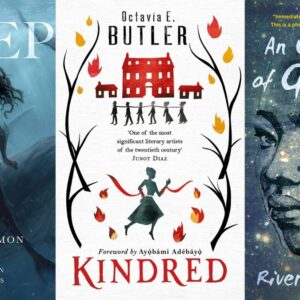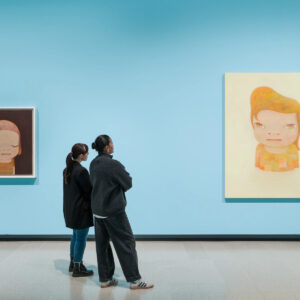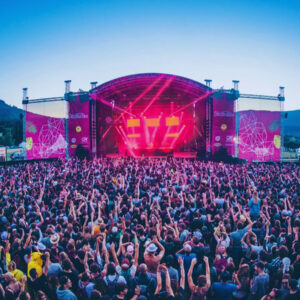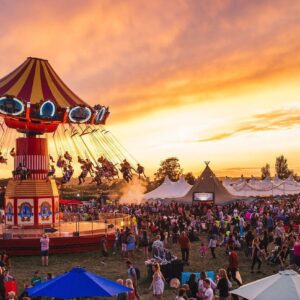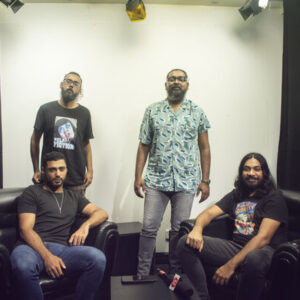In this edition of WhatsOn ‘In Conversation With…’ Adam Humphreys gets up close and personal with veteran photographer Tom Miles.
Meet Tom Miles, a working professional photographer who has been in the business for more than twenty years. In that time, he was seen the emergence of digital photography (something us millennials take for granted) and has seen the professional transition from film to digital format. He talks about the beginnings of his career in Blackpool (UK’s answer to Las Vegas), building his own darkroom as well as the mechanics behind the processes of shooting, learning new techniques, getting to grips with digital. Also, Tom talks about the competitive nature of the photography business the higher up you get and his hopes for the photography post Covid-19 and what he’ll be doing in the meantime.
“There is a temptation when you’re about 9 months to a year in to start thinking that you’ve learnt most of what there is to learn. Don’t make this mistake!”
So, Tom, what was it that first inspired you to get into photography?
I borrowed my Dad’s old camera on a family holiday to Scotland, and initially just took snaps and landscapes. A couple of years later, when I was 15, I landed some work experience at the Northants Evening Telegraph, and it totally changed my outlook. I was taught to develop and print black and white film, of which there seemed to be an endless supply. I used to go out with the photographers on jobs, and even got to shoot a few myself. Before long I’d built a darkroom in my parent’s outside loo, and was shooting portraits of my friends, as well as earning money shooting local bands, businesses etc.
Now for those who know you will know that you studied at Blackpool and Fylde College in Blackpool, was there ever much photographic opportunity there whilst you were studying?
Blackpool is/was a very strange place to live. If you’ve never been, think of it as Las Vegas without the money. Or Class….
It was the first place I lived after leaving home, and of course that transition in its own right creates a huge sense of adventure and opportunity, so I expect I’d have found lots to shoot no matter where I’d moved to. The course at the time was led by two inspirational lecturers – Geoff and Gordon – who I was very lucky to be tutored by. Blackpool as a location was a source of endless amusement, was also well placed for wild areas like the Lake District, and actually pretty handy for getting to Manchester too.

So, would you recommend it as a good place to start if you’re thinking about starting out in photography?
Only with reservations these days, as the last time I visited the course (admittedly in 2008) the culture had changed quite dramatically, and there were very few signs that much of the legacy of Geoff and Gordon had remained. Nowadays, if someone says they want to study photography, with an aim to making a living out of it, I tend to direct them elsewhere or suggest they don’t go to college to start with.
When digital photography emerged in the late 90’s was it easy to grasp bearing in mind it has its differences compared to the film format?
It was bloody impossible to grasp to begin with. There were so many false starts, camera systems that were the next big thing but weren’t, and a whole new world of tech stuff to learn. It was made all the harder by having to learn these things on the hoof, rather than be taught them in a structured way. On my first ever digital shoot as an assistant, I thought I’d be neat and tidy and clean up the image folder on the computer desktop, only to watch all the images disappear off the camera as well. Not a nice feeling, but thankfully they were also hiding somewhere else on the hard drive. Early digital cameras were expensive, and rubbish, but it was obvious that film’s days as a professional medium were numbered, yet no-one wanted to be the one who gambled big, and bought loads of stuff that would be out of date in 6 months! Things didn’t really settle down, in my opinion, until about 2002-2003 when you started to have affordable DSLRs that also had an OK resolution and decent colour rendition in them.
In terms of the varied techniques when it comes to processing in both formats e.g. using colour chemicals and/or tea to make film photos look old and using Adobe Photoshop for the same thing in digital which would you have more fun with?
Those of us who actually had to work with film professionally would probably admit that it was very time-consuming, and very expensive if you made a mistake. I do have many happy memories of mucking around in the darkroom and seeing what could be done, and there is undoubtedly something magical and irreplaceable about watching a print come to life in the dev, or pulling a developed roll out of the tank and taking your first look at the negs. What we tend to forget is how long it took to set up and clean, how messy it was if it got on your clothes or skin, how much the chemicals stank, and how much it cost to produce just one finished print.
Don’t get me wrong, digital obviously isn’t free – there’s an initial setup cost of course for kit – and then potentially an ongoing subscription cost for software, but in respect of how much it costs to just play around and experiment the cost is effectively nil. It’s still a lot of fun though – there’s so much you can do with software even before you start producing over-processed rubbish, that you should be kept entertained for years!
And which would require more patience in regards to timing and materials?
Film, obviously. Well, I say that overlooking the long transition into digital that those of us who didn’t start in it had to work through. If you were starting out now, the learning curve is much more straightforward, so you should see rewards quicker, and need less patience. This may not, of course, be a good thing 😉
Going back to the beginning of your learning how easy did you find it both to set up a dark room and use it?
Probably far easier than most, as I was taught all the basics at the local paper, which was a very big commercial darkroom, set up with 4 Leica enlargers and all sorts of labour-saving devices. I was able to take a little bit of cash my Godmother left me, and recreate one in the outside loo, as described earlier. It would usually take 5-10 minutes each time I wanted to use it to get the place blacked out, chemicals mixed up etc, but then it was easy to use.
In regards to your work you specialise in Portraiture, Fitness and Sports are there any other genres you cover?
Besides those, which make up most of my work, I’m doing more “outdoors” work these days as well. Hiking, climbing, outdoor pursuits – that sort of thing. I’m loving this, as it’s much more in line with what I enjoy personally. For all the time I’ve spent shooting fitness, I can’t say I’ve ever actually wanted to be in a gym!
For someone who’s in the photography business itself can no doubt be aware that it can at times be somewhat competitive. Are there some areas that are more competitive than others?
Yup – the higher up you go, the more competitive it seems to get. The sort of jobs that I’m pitching on these days are very competitive, and it’s not always the budget/quote that’s the deciding factor. It’s just as likely that the job will go to the person who the agency/client thinks is the “best fit” and this can be made up of so many different factors.
You’ve been in the business for over 20 years and have assisted many other photographers, how were some compared to others and what did you take from working with them?
Some became very good friends, and I stayed in touch after I set out on my own. Some farmed work out to me, some taught me huge amounts and shared equipment, studio space and the like, and some were obnoxious egocentrics who were very difficult to be around.

The interesting thing is I think I learnt something from all of them – even if that thing was “don’t behave like this”. Assisting is by far the best way to learn not just the business side of photography, but also how different photographers approach their work, both technically and creatively. The learning curve in assisting is incredibly steep when you leave college – you really will be thrown in at the deep end. There is a temptation when you’re about 9 months to a year in to start thinking that you’ve learnt most of what there is to learn. Don’t make this mistake! Not only will you potentially make a massive prat of yourself, but you’ll close yourself off to so many more things you simply haven’t seen yet. I had a couple of “wake ups” in my second year of assisting when I realised “god, I would never have thought of shooting something that way” that made me realise just how much I still had to learn. I’d advise (if you can afford it) to assist for at least 2 years, and for as many different photographers as possible.
There are some who are known for being awkward to work with and some who treat you like a good mate; did that have any effect on how you learnt from them?
As I said above, I always learnt something even if it was just a “negative” lesson. One of the most obnoxious to work for was also one of the most technically demanding, which was actually a great discipline to have. Something I discovered fairly early on was that the photographers who trust you a lot are a great opportunity to learn. My first thought with some of these guys was that I was being taken for a ride – I’d be on 10% of their day rate and doing 90% of the work, but in hindsight I appreciated what a great learning curve it was, and how valuable that trust they placed in me was.
As a freelancer have you ever thought about getting agency/management representation?
Thought about it, but never made serious moves as my book isn’t focused enough, so an agent wouldn’t really be interested.
Lastly, what are your hopes for the future in regards to your photography when we near the end of 2020 and the current Covid-19 situation?
Same as always – keep learning, keep shooting, keep getting paid to go out and have adventures. You could have asked me the same question 20 years ago and gotten pretty much the same answer!


